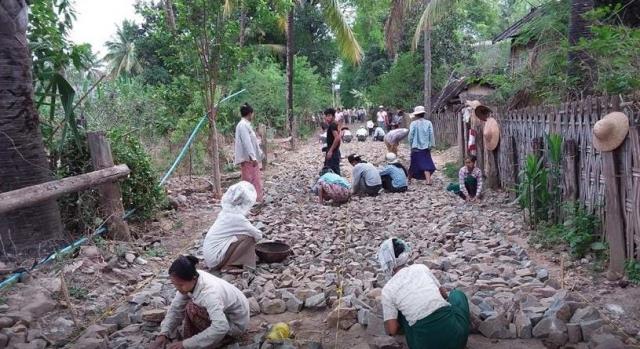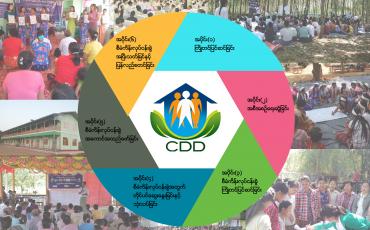
by Bobby Anderson
In the last two decades community-driven development (CDD) has become a popular development project model for the World Bank, the Australian Government’s Department of Foreign Affairs and Trade, and other donors. A recent 3iE report however, questioned the validity of CDD, concluding that, while it did build infrastructure, it did not improve social cohesion or other outcomes. This has led to a debate between managers, donors, and critics, with some going so far as to question CDD’s raison d’etre.
3iE’s findings came as no surprise to me. CDD wasn’t intended to meet such lofty goals as improved social cohesion in the first place. That’s not to say some implementers haven’t been tempted to try. I’ve also been tempted to look for impacts beyond CDD’s limited participatory development goals, because they do occasionally and unexpectedly emerge. The 3iE report and the debate which followed, serves as a useful reminder of CDD’s core functions, and a rejoinder to those who seek to systematize any unanticipated impacts that may arise.
Hopefully my recently published discussion paper serves as a small contribution to the debate. It is shaped by my years of experience with CDD. I currently work on the Union of Myanmar’s National Community Driven Development Project (NCDDP), and in my time I’ve been a CDD implementer, designer, donor, evaluator, and critic. This paper is intended for experienced CDD managers and donors, as well as those new to CDD. For the latter, it covers the evolution of CDD and my own experience of what CDD can and cannot do. For the former, it is of particular use in its discussion of contextually sensitive adaptations to program implementation at the grassroots, and hopefully gives some definition to the paeans to ‘conflict sensitivity’ so often bandied about in meeting rooms far from the field.
The paper adheres to one of the earliest and simplest definitions of CDD – CDD is a subset of participatory development by which communities are facilitated to select their own development priorities, and are then given the means to action those priorities by government, through direct fund transfers from a national-level ministry of finance to a village. CDD is government-implemented, and across a relatively long timeframe, usually a minimum of five years. ‘Government’, here, is key. A ‘CDD’ project implemented by an NGO with a one-year timeline is not technically a CDD project. It is these variants that are often making lofty claims about CDD impacts.
Adhering to this early and simple definition, the paper describes, based on my experience, where CDD performs well, and where it doesn’t.
First and foremost, CDD delivers infrastructure. CDD’s horizontal delivery mechanism of staff and volunteers can deliver a rapid number of small projects in a broad geographic area in a manner that government bodies are traditionally incapable of. Because of the community management model, it tends to deliver projects that are cheaper, of higher quality, and with less loss due to corruption. Originally, CDD was all about infrastructure and participation, and donors don’t tend to systematically measure much beyond this. But CDD has now expanded to address livelihoods and food security issues, and health and education as well, especially through facilities management.
Additionally, CDD can play a positive role in conflict-affected and fragile contexts. For example, CDD is often the first interaction state actors have with communities in conflict-affected and insurgent areas, and communities initially mistrust it. But when a government asks a community what they want, and then delivers it, in most contexts that is unusual, but in a conflict context, that’s revolutionary. Community members have described CDD as the first thing they’ve ever gotten from a government which was beneficial. CDD successes can help lay the foundation for deeper and more tangible government to citizen interactions. But CDD doesn’t do this in itself – it is one puzzle piece of many, and in isolation, would achieve little.
While CDD can play an important role in fragile environments, CDD doesn’t stop conflict. World Bank meta analysis of numerous CDD impact evaluations show no evidence that CDD in itself is a conflict management tool. My own experience bears this out and in fact supports quite the opposite, CDD can exacerbate conflict. It is a process open to elite capture. If managed in a context-blind manner, it can lead to violence. With this in mind, beyond detailing where CDD performs well or poorly, the paper describes ways in which my colleagues and I have sought to adapt CDD approaches to address issues practitioners may face at the grassroots.
With a strong focus on community participation and opportunities to strengthen government-citizen engagement, it can be tempting to oversell the benefits of CDD to human development or governance arrangements. However, CDD has little impact on women’s empowerment beyond the confines of the CDD project. Within CDD, women’s participation demanded as a condition of the project can, beyond resulting in said participation, lead to increased self-confidence, changing perceptions of women’s roles, and other soft impacts. But this does not translate into increased women’s leadership and roles in governance outside of CDD. This conclusion is based on my own experience, however, such impacts may have been found in other projects.
CDD doesn’t impact social cohesion. Increased social cohesion results from the cessation of conflict. A successful CDD project may be a symptom of increased social cohesion but it is not the cause of it.
CDD isn’t a new form of governance. One of the biggest assumptions made about CDD, and not just in conflict areas, is that it represents a new and equitable way of making decisions and running things. But CDD volunteer structures don’t tend to take on duties beyond the role of the project, nor do they outlive the project cycle.
CDD remains a useful tool, as long as its minimalist definition is adhered to. While there may occasionally be new development roles which CDD might play, it is important that such expansions be made with patience and caution. While CDD occasionally has other impacts beyond the scope of the project, all credit should go to the communities and individuals participating—not the implementers. After all, they have a better idea of what they are doing than any outsider ever will. That’s the whole point of CDD.






